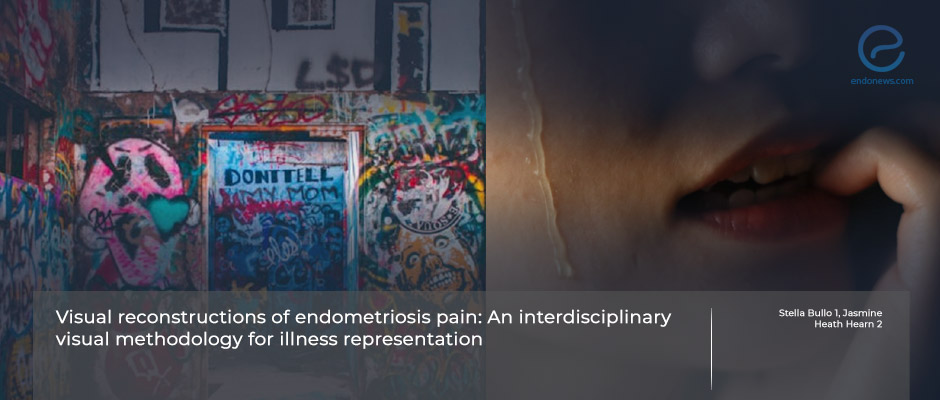Visual representation of endometriosis pain
May 2, 2024
The study uses paintings and materials instead of words to conceptualize the painful experience.
Key Points
Importance:
- Limited work has explored the utility of imaginary production as a pain communication system between clinicians and endometriosis patients.
Highlights
- Women with endometriosis find it challenging to communicate their pain effectively while using the numerical rating scale for pain, which limits the understanding of the depth of the pain.
What's done here
- Drs Hearn and Bullo and her colleague aimed to explore the utility of imaginary production as an emphatic pain communication strategy.
- They set up a prospective, qualitative, multimodel, participant-generated imagery study and collected data from 2 groups of patients.
- The creative mixed methodology for the theme representations was 'Pain as Physical Violence".
- Colors were used as emotional, textures for sensory, and materials as sensation properties.
Key Results
- The focus group with 4 patients was aged 25-40 years old, and the 6 patients group had a delayed diagnosis of endometriosis.
- Patients used pink to represent the internal organs, green for affecting entities, and black for bad events to describe pain. metaphorically.
- Materials like cotton, pegs, and pins stand metonymically for the actions they represent, such as bloating, squeezing, or pulling.
- Patients selected sharp materials like metal blades or soft materials like cotton wool and velvet pipe cleaners to describe their organs and the pain.
- Findings represent the elements of endometriosis pain that may be overlooked, ignored, or not conceptualized when standard questionnaires measuring pain are applied.
Limitations:
- Data was obtained from patients in these two groups to express themselves freely, no statistical comparisons between groups were made.
Lay Summary
Endometriosis is accompanied by severe chronic pelvic pain that impacts quality of life, relationships, and work conditions. Studies aiming to improve pain are frequently encountered in the literature. Nonetheless, pain research is complex due to its subjective nature, and cannot be visualized. Various studies have focused on language tools such as metaphorical language to externalize the painful experience of women with endometriosis.
Visual representation of pain means externalizing painful experiences not only captured by verbal accounts but also by color, texture, and materials used to enrich the physiological and physical understanding of the patient's lifeworld.
In their research, Drs. Hearn and Bullo from Plymouth Jarson University, Plymouth, UK, created some sub-themes to gain a full appreciation of pain representation in women who had symptomatic endometriosis disease. They used "color" as an emotional representation, "texture" as sensory qualities, and "materials" as sensation.
Patients were asked to express their painful experiences due to endometriosis using the materials and colors placed before them. Each patient selected a different material and color to describe freely and clearly what she felt during the pain. For better understanding, every work created by patients was explained in their own words.
According to the authors, "understanding the common visual and symbolic representation of endometriosis pain will help to reduce the misdiagnosis, diagnosis delay, and pain dismissal and normalization. They recommended future researchers utilize the methodology described in this paper which was recently published in the British Journal of Health Phychology.
Research Source: https://pubmed.ncbi.nlm.nih.gov/38462537/
chronic pelvic pain conceptual metaphor metonymy visual representation physical violence endometriosis.

